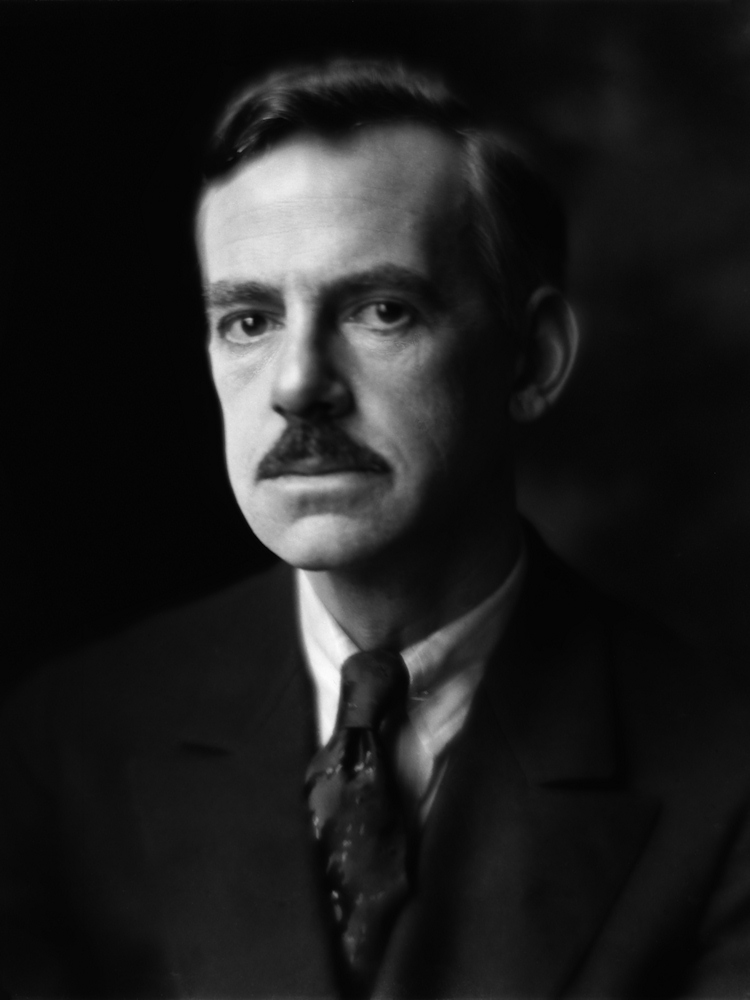Illuminating 'Night'


William Davies King was just 14 when he first read Eugene O’Neill’s “Long Day’s Journey Into Night,” and it changed his life. Now he’s about to change the way readers experience the Pulitzer Prize-winning play.
Yale University Press has published a multimedia e-book version of the play, considered the playwright’s masterpiece. Edited by King, a professor in UC Santa Barbara’s Department of Theater and Dance and one of the world’s leading scholars of O’Neill, the interactive e-book represents a radical reimagining of how the play is read and understood.
“It’s a play that’s rooted in history and even more so in family history,” King noted. “There are always questions students have, like, ‘What is fact and what is fiction?’ It’s an autobiographical play, but like most autobiographical writings not strictly, exactly a snapshot of history. It’s a shaped piece of art. In teaching it all those years it’s always a matter of trying to frame it properly as a play that looks at family as tragic destiny and addresses the difficulty of being an artist.”
For King, the multimedia book was a giant labor of love and a leap into a new frontier. “It’s never been done with a play,” he observed. “As far as we could find we had no precedent for this at all, so we had to figure out, ‘How do we make a dramatic text work this way?’ ”
To help “make the play come alive,” as he explained, the new e-book — which is available for Kindle and iPad platforms — offers a host of interactive features. Among them: dozens of photos; historical and critical essays; notes; clips of the play performed at the Oregon Shakespeare Festival in 2015; interviews with professional actors talking about performing scenes; audio clips of O’Neill reading portions of his play; video walkthroughs of the Monte Cristo Cottage in Connecticut where the play is set and Tao House in California where O’Neill wrote it; diary entries by O’Neill and his wife; and more.
“I went to Yale and created this huge archive of material — of all the notes and outlines that he wrote as he was putting this together,” King said. “I gathered the correspondence that surrounded it, a big batch of reviews of the production when it was produced in 1956 — all sorts of stuff like that.”
The multimedia edition, with a foreword by Jessica Lange, who opens later this month in a New York production of the play, is the latest evolution of a work O’Neill never even intended to be staged, King noted. “It was written late in O’Neill’s life, and it was personal like no other play. It delved into his family skeletons so deeply that he decided it should not be published until 25 years after his death — and should never be produced, in fact.”
Carlotta O’Neill, however, decided the play was too important to languish. Three years after Eugene O’Neill died in 1953, Yale University Press published her husband’s play without an introduction or footnotes. It wasn’t until 2014 that Yale published a critical edition — edited by King — that included substantial notes and essays on the play’s production and historical context.
Set in the Monte Cristo Cottage in August 1912, “this play of old sorrows, written in tears and blood,” as O’Neill wrote to his wife, follows the Tyrone family from 8:30 in the morning until around midnight — the “Long Day’s Journey Into Night.” Based on O’Neill’s own family, patriarch James Tyrone is an embittered actor; mother Mary is a morphine addict; brother Jamie is a cynical alcoholic; and Edmund — O’Neill — is a sickly intellectual. Over the four-hour course of the play the family’s resentments, fears, bitterness and dysfunction unfold like a toxic tide.
As King notes, “This is probably the most depressing play on Earth, next to ‘Oedipus’ and ‘King Lear.’ ” It is also undeniably brilliant. It received the Pulitzer Prize and is considered by many critics the quintessential American play. And it set King on a path that became his life’s work.
“The fact is, I would not be here in this office today if it weren’t for this play,” said King, who is also editor of the Eugene O’Neill Review. “I read this play when I was in tenth grade, and I had no kind of inclination to drama. I came from the wastelands of Ohio. I had hardly seen a play at that point. But this one so moved me that by the time I graduated from high school I’d read all of O’Neill’s plays and everything else I could read about him. He became my first obsession and passion. And that sort of turned the whole ship of my life in a new direction.”
O’Neill’s life and works offer no shortage of material to obsess over. Considered by many scholars to be the greatest American playwright, he beat alcoholism and went on to win a Nobel Prize in Literature and four Pulitzer Prizes. “O’Neill was an awful alcoholic who overcame that, stopped drinking in the 1920s, and more or less made the decision, ‘I’m going to be an immortal playwright’ instead of drinking himself to death,” King noted.
It’s fair to say O’Neill succeeded, and now a multimedia “Long Day’s Journey Into Night” has the potential to reach 21st century students who’ve come to expect more than just words on a page. It was an enormous project, King said, “but it’s exactly the kind of work that I had hoped to end up doing in my life. This is what I was set up to do, and now I’ve gotten to do it.”












